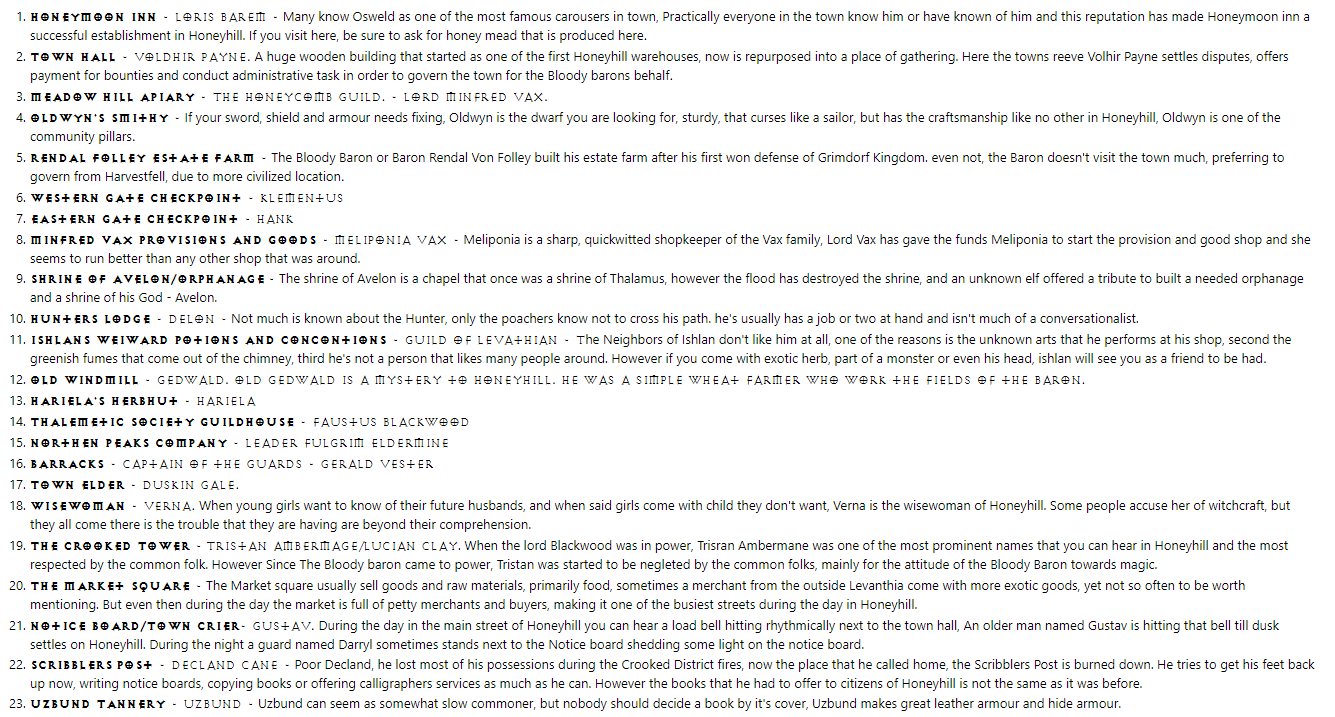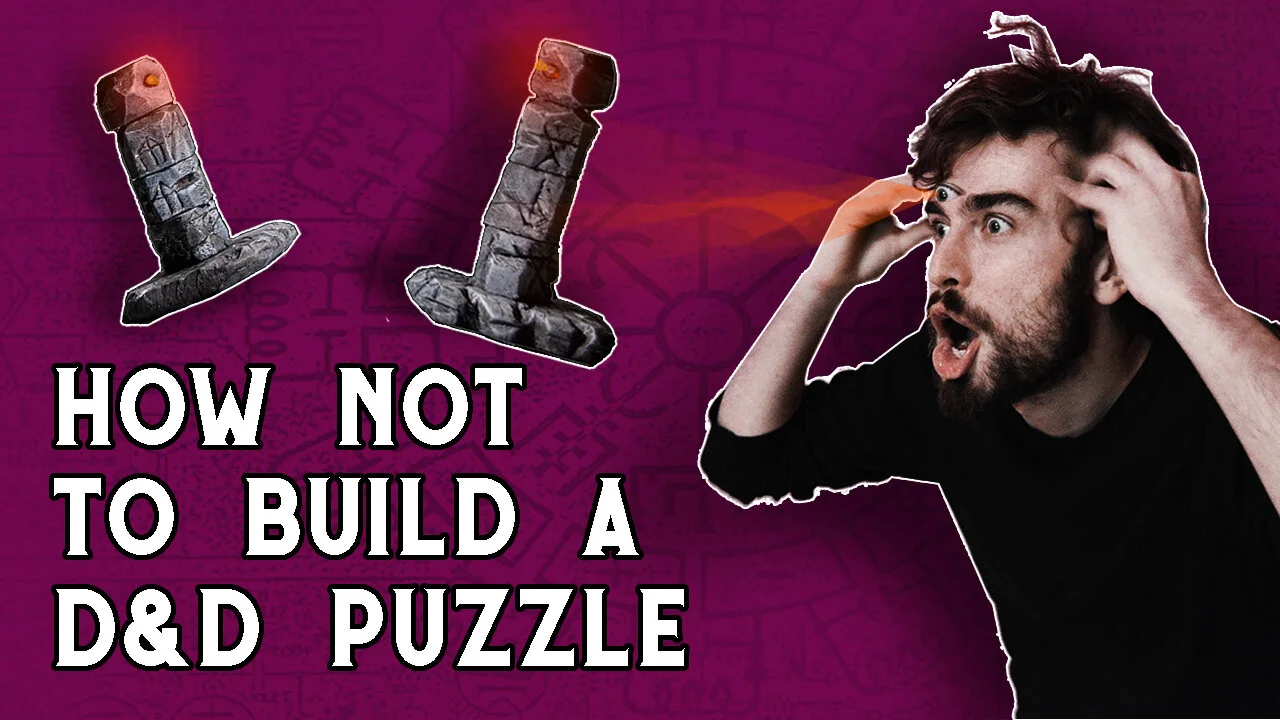How Not To Burn Out Running a Sandbox Campaign
Sandbox campaigns are fun. It's my personal choice when I'm DM'ing my games. One of the reasons why I love sandbox is that it gives the players more choice to go where ever they want and do whatever they get interested along the way, compared to strictly following a saga type of game.
Yet, sandbox games pose challenges like other campaign approaches. One of the biggest problems in running a sandbox campaign, in my opinion, is the scale problem and the biggest of them all - burnout since probably you will need to prepare more than one or couple things before the sessions. In this blog post, we will take a look at how I deal with these scale problems and what do I do to avoid this burnout.
So there are many great things about the sandbox type of game approach, and one of them is freedom for the players. Freedom could be a double-edged sword since too much of it could give the impression of endless possibilities, which in turn can cause inaction due to having too many choices. It can create a bit shallow quests and stories since you need to spread your self a bit thin when writing ten quests instead of one. So, what is the antidote to all of these problems? If we look at the bigger picture, it's probably - Scale. And how do we solve them? - Scaling choices down.
The Starting a Sandbox Campaign
Now how do you start and build yourself a strong foundation, where you will not encounter that many problems along the road? Or how do we try to fix up your current sandbox campaign that is going through a rough path?
My suggestion for starters is to create a small hub, a village/town or city(Depends how familiar you are with sandbox games, how much time on your hands and your dm' ing experience in general). If you're a pretty new DM, I will suggest starting with a small village and try to flesh it out rather than seek to create a great metropolis or a large town or the whole world. I would proceed in this way to see how the entire process goes and how much time it takes to flesh out a place and have that as a reference for the future. Another reason for starting small is whatever your players will skip on the content that you make - you can use those encounters/merchants/guilds/places in other places you create later on.
Another tip is to have only three other directions from the hub location where the players could go. It could be other villages, towns, or cities, but by that time they are done with the hub location, it's going to be easier for you to prepare for another location. Also, when thinking of these three directions/locations, have something planned for the players to encounter, maybe its a band of thieves, wildness encounter, a plot hook for the new place where are they are going, or a plot hook for the place they are leaving. Having travel encounters gives more immersion and the feeling that the sandbox is truly living, and it's not static. You can feel the thinness of a sandbox campaign traveling from one place to another. As a DM, you tend to forget about it when you are busy making a plethora of quests and encounters for your other locations.
The Right Amount of Quests and Encounters
What are the right amount of Encounters for your players other than quest locations or dungeons? It depends on you, but this is what I prescribe if you are thinking about doing a village/town/city and have a place that feels pretty lived in is:
Village - Up to 15 Encounters.
Town - About 30 Encounters.
City - 45+ Encounters.
Wait. What? Forty-five encounters for a city to prepare, are you crazy? And to that, I say yes, and no. If you planned 45 insane, in-depth encounters, that would be too much. Still, in means of encounters, I mean that can be an NPC, a description of the neighborhood, a shop, a combat/social/mystery encounter, whatever your players interact with. It can be just a small little detail that you give for your players. And it doesn't mean that you need to do all of these encounters beforehand. Yet, having just a couple encounters and a ton of space makes the sandbox feel empty and unnecessarily big. In means of a sandbox campaign, always choose depth over the scale, and I think your players will enjoy that more than a big shallow size in comparison.
Use Maps, But not the World Map
A map is a handy tool for your sandbox campaign. Using maps may introduce future paths your players could take. Maybe they want more combat, well Leviathan Coast is a place to hunt monsters where a famous monster hunter guild resides, wish to have more RP heavy path maybe Honeyhill is the place where guild intrigues are developing every single day. By making a map, I put the markers of interest for my players and give at least a couple of directions to go from that point.
One of the reasons I like maps is when I give them to my players. On the other side of the map, I provide the names of the NPCs, locations in town, and other things. That serves the players that they will probably not forget the names of the 20 encountered NPC, also provide a few rumors that surround the location, giving them small plot hooks to follow.
Does that mean that It should contain everything? Of course not. If you give the map for a rogue, you can provide a secret map, with unique markings and other things to solve a quest, find secret NPCs, or the local Black Market.
Idea for a handout - Rogue Secret Map - Solve a Riddle/Puzzle to Find a Black market in the city.
After my players get bored with the location or completed the main quests, it's time to move on. And this is the moment where they decide to go.
Reconsider the World Map
I want to make the whole world! Shut the hell up, Timmy! You're not getting your hands just yet on the world map. Your players wish to own one of them, ignore them, say the world is out of parchment, I don't care!
The big fallacy here is that you will scatter your attention through the whole continent. Don't do this. Go deep instead of being a shallow approach. Focus your attention on making one or a couple places interesting, maybe then consider making a map when you already visited 3-5 places with additional three different routes to take. Otherwise, you will just scatter your valuable attention, trying to make the dwarf lands enjoyable, then the human kingdoms and the elf enclaves... And then your players are sitting in a boring ass town with nothing to do. I hope that was worth to you, Timmy.
But can I draw that for myself? Jokes aside, I would stay clear of the world map for as much as I could. Maybe an outline is better to have, but just a framework you could change as the campaign goes along.
Use a list
An Example of My Honeyhill list of Places/Locations/NPCs that I give as a handout to my players. And use this list with a map.
The reason I use a numerical list on the map is that it's the most efficient way to mark your map. I tried markers, beautiful icons, but a list is superior in every single way. Its time-efficient. It's clear as day. You look at the number, and then you look at the list for information. It's like ordering Chinese food, you say the number and get what you want, try to be all fancy with the "Spicy-Kung-Pun-Dragon-Pow-Chicken" and in the end, you will look like a foolish man. Don't do it, just say the number, be a simple man.
Another reason lists are excellent is that you can easily extend them by writing the number down and on the spot created NPC that was needed at the time. And edit the map photo after on any editing software(Even Paint Goddammit), and it will suffice.
Using Systems
Sandbox games can have flimsy villains that are bound to their location. I advise you to check out this article - "How to Run your Villians Organically." This system makes you see the villains and plan strategically against your party or settlements you are creating. Maybe Riverstone has a quarry that the Orcs are planning to raid, and maybe Bridgeport has an old NPC adventurer that rumors tell it, that knows where to find a dragon egg that Archon the Wise, Kobold high priest wants it for itself, so they capture him. Try to find systems that ease the workload as a DM for you when running sandbox games. Organize your notes, maybe use a laptop when running the game to find your needed information.
Use Towns/Villages/Locations Thematically.
Now one of the advantages of a sandbox campaign is that you can explore many different themes, want to Swashbuckle, and raid the coast? Maybe some Lovecraftian village cult quest sparks your fancy? Hmmm... Vampires? Everything is just dandy, but try to pin them to some locations and use them thematically. It will make your world feel lively, but also you can generate different interesting NPCs that could appear in your player's journeys introducing a plot hook somewhere far away. Not only that, when you dedicate some theme that you will explore, it will provide you more depth to your sandbox campaign.
What is the End Goal?
Sandbox Campaign is not a Saga, not a trilogy or something along those lines. So how do you achieve a sense of finality? Well, I always advise having firm beginnings and ends to your quests. Not having finality to some of the journeys will make them feel that this world is just a drag, and you are chasing similar things with little to none progression. So give the firm endings even if the party spent two or three sessions in means of the quest, have mini-campaigns that have visible starts and finishes, which brings a sense of accomplishment.
Even speaking about the whole sandbox experience indicate for yourself for how you are going to play this campaign, talk to your players. It's better to decide if you're going to play 25 or 50 sessions in total and then roll new characters, rather than say infinite. Also, this limitation will bring you more freedom afterward when making the structured story arcs, weight the critical moments of the campaign, and so on. So all things must end, and a sandbox campaign is no exception.
I hope this helps you with organizing your game, helping sandbox lovers not to burn out due to an immense scale that this approach gives the DM's. Cheers and happy gaming!
If you enjoyed this article and want to see more of Dungeon Goblin content, consider supporting us by making a direct donation through our blog or supporting us on Patreon. Dungeon Goblin is a new blog, and your support matters immensely to us. We want you to become one of the first Dungeon Goblin supporters and grow it into something amazing one day. Thank you for reading!








